Welcome cat owners and eco-conscious enthusiasts! Are you tired of sacrificing a clean home for our planet? Look no further because today, we’re delving into the world of Eco-friendly cat litter alternatives.
We all love our feline friends, but let’s face it – conventional clay litters can harm their health and the environment.
But fear not! This blog post will unveil a treasure trove of sustainable options that’ll keep your kitties happy while reducing your carbon paw print. Say goodbye to compromise and join us as we explore innovative, purrfectly safe, cost-effective, and gentle solutions on Mother Earth.
Introduction To Cat Litter And Its Impact On The Environment:
Cat litter is essential for cat owners, providing a clean and comfortable environment for their pets to do their business. However, the traditional clay-based cat litter has been causing significant environmental concerns in recent years.
The demand for eco-friendly alternatives is on the rise as people become more aware of the negative impact that cat litter can have on the environment.
This section will explore the different types of cat litter and their potential effects on our planet.
The Impact Of Traditional Cat Litter On The Environment:
Traditional clay-based cat litter is made from natural clay minerals extracted from the earth through strip mining. This process involves removing vegetation and soil layers, disrupting ecosystems, and leaving behind a barren landscape. Not only does it destroy wildlife habitats, but it also contributes to erosion and pollution of water bodies due to runoff from rainwater.
In addition to its destructive production process, traditional cat litter poses several environmental hazards after being used by cats.
Clay litters are non-biodegradable, meaning they do not break down naturally in landfills or composting facilities. As a result, they continue to take up space in landfills and contribute significantly to our growing waste problem.
Moreover, most traditional litter contains added fragrances and chemicals that can be harmful when disposed of into our ecosystem.
When these chemicals come into contact with water sources like rivers or oceans, they can harm marine life and contaminate drinking water supplies.
Traditional Cat Litter Ingredients And Their Environmental Effects:
Traditional cat litter is a staple household item for many cat owners, but have you ever considered its environmental impact? Most traditional cat litter is made from non-biodegradable materials such as clay and silica, which can negatively affect the environment.
This section will explore some of the common ingredients found in traditional cat litter and their environmental effects.
- Clay:
The most commonly used ingredient in traditional cat litter is clay. It is cheap, highly absorbent, and easily clumps together when wet.
However, clay is a non-renewable resource that requires extensive mining processes to extract it from the earth. This mining process results in deforestation and releases harmful chemicals into the environment.
Furthermore, once used as cat litter, clay cannot be recycled or composted and ends up in landfills, where it takes hundreds of years to decompose.
- Silica:
Another commonly used ingredient in traditional cat litter is silica gel crystals. These tiny granules are highly absorbent and trap odors effectively.
However, like clay, silica is a non-renewable resource that requires energy-intensive methods to produce and negatively impacts the environment during its extraction process.
Additionally, silica crystals do not break down over time and can pose a choking hazard to wildlife if ingested.
- Fragrances:
Many traditional cat litters contain added fragrances or perfumes to mask unpleasant odors. While these may make your home smell better temporarily.
Biodegradable Cat Litter:
Biodegradable cat litter is made from natural materials such as corn, wheat, wood shavings, or recycled newspaper.
These materials are renewable and break down quickly in landfills or compost systems without releasing harmful environmental toxins.
They also have excellent absorption properties and control odors effectively.
Additionally, it produces minimal dust compared to other types of litter.
One of the key benefits of using biodegradable cat litter is its ability to break down easily and quickly. This means that it can be composted or disposed of in an eco-friendly manner without harming the environment.
Plant-based materials are also renewable, making them a more sustainable option for long-term use.
Most cat litter on the market is made from non-biodegradable materials such as clay or silica, which can take hundreds of years to decompose in landfills.
On the other hand, recycled paper litter is biodegradable, meaning it will break down naturally over time without harming the environment.
1. Pine Cat Litter:
Pine cat litter is another eco-friendly option from compressed sawdust pellets or recycled pine shavings. It has a natural pine scent that helps to neutralize odors and clumps well for easy cleaning. This type of litter is also lightweight and flushable in small quantities.
2. Bamboo Cat Litter:
Bamboo cat litter is becoming increasingly popular due to its sustainability and biodegradability. It is an all-natural option made from bamboo grass fibers with excellent absorbency and odor-control capabilities. Additionally, it produces minimal dust compared to other types of litter.
3. Recycled Paper Cat Litter:
Recycled paper cat litter consists of pellets made from post-consumer waste paper products such as newspapers or cardboard boxes.
It offers high absorbency rates and controls odors effectively. This makes it an excellent choice for cats with allergies or sensitive skin, as it contains no added fragrances or chemicals.
It is a sustainable and eco-friendly option for cat owners looking for alternatives to traditional clay or silica-based cat litter. This type of litter is made from recycled paper materials and is environmentally friendly but affordable and convenient.
Unlike traditional clay litter, which can be heavy to carry and dispose of, recycled paper litter is lightweight and easy to handle. This makes it an ideal option for pet owners with physical limitations or mobility issues.
Not only is recycled paper litter good for the environment, but it also provides a comfortable surface for your feline friend to use as their bathroom area.
Its soft texture mimics natural materials like sand or dirt, which many cats prefer over more complex surfaces like clay.
One of the main benefits of using recycled paper litter is that it reduces waste and promotes recycling.
4. Corn-based cat litter:
It is one of the most common plant-based options available on the market. It is made from dried corn kernels ground into small granules similar in texture to traditional clay litter.
This type of litter clumps well when wet, making it easy to scoop out and dispose of waste. Corn-based litters typically have natural odor-control properties and are dust-free, providing a healthier environment for both cats and their owners.
5. Wheat-based cat litter:
It is another popular choice among eco-conscious consumers. Like corn-based litter, it clumps well when wet and has excellent odor-control properties. Wheat litter is also known for being soft on cats’ paws, making them a comfortable option for sensitive felines.
However, some wheat litters may contain gluten, which could cause issues for cats with allergies or sensitivities.
6. Pine and cedar wood pellet litters:
Pine and cedar wood pellet litter are becoming increasingly popular as eco-friendly cat litter alternatives.
Made from compressed sawdust pellets, these litters are natural, biodegradable, and sustainable options for cat owners who want to minimize their environmental impact.
One of the main benefits of using pine and cedar wood pellet litters is that they are highly absorbent.
The pellets have a high surface area, which means they can hold a significant amount of liquid. It makes them an excellent choice for multi-cat households or cats that produce a lot of waste.
Additionally, because the pellets are made from natural materials, they are free from harsh chemicals and additives that may irritate your cat’s paws or respiratory system.
Another advantage of pine and cedar wood pellet litters is their odor-control properties. These types of litter naturally absorb odors without adding fragrances or deodorizing chemicals.
The wood fibers in the pellets bind to ammonia molecules found in cat urine, neutralizing unpleasant smells. This makes them an ideal choice for cat owners who want a litter that can keep their home smelling fresh without relying on artificial scents.
Pine and cedar wood pellet litters also have excellent clumping capabilities:
When exposed to wetness, the compressed sawdust pellets will break down into fine particles that form tight clumps around urine or feces. This makes clean-up easy as you only need to remove the soiled clumps instead of changing the entire litter box each.
7. Natural crystal litter:
Natural crystal litter has recently gained popularity as an eco-friendly alternative to traditional clay litter. Made from silica gel, a porous mineral similar to sand, natural crystal litters offer numerous benefits for both cats and the environment.
Advantages Of Natural Crystal Litter:
One of the critical advantages of natural crystal litter is its superior odor control. The highly absorbent nature of silica gel traps moisture and eliminates odors, keeping your home smelling fresh and clean. This makes it ideal for multi-cat households or small living spaces where litter box odors can quickly become overwhelming.
In addition to odor control, natural crystal litter also boasts excellent clumping properties.
When exposed to liquid waste, the crystals form tight clumps that are easy to scoop out, minimizing the amount of litter you need to replace each time. This saves you money in the long run and reduces waste going into landfills.
Another benefit of natural crystal litter is its low dust content. Traditional clay litter can produce a significant amount of dust when poured or scooped, which can be harmful if inhaled by cats or humans with respiratory issues. On the other hand, natural crystal litters have minimal dust production due to their larger particle size and non-clay composition.
Furthermore, natural crystal litters are biodegradable and environmentally friendly.
They do not contain any added chemicals or fragrances that could harm your cat or contribute to pollution in landfills. Silica gel is a naturally occurring mineral that can break down into harmless substances over time without leaving.
DIY options such as shredded newspaper or sand:
When choosing an eco-friendly cat litter, a variety of options are available on the market. However, consider making your DIY cat litter using simple ingredients such as shredded newspaper or sand to reduce your carbon footprint and save money.
Shredded newspaper:
It is a popular choice for DIY cat litter because it is inexpensive and biodegradable. To make your newspaper litter, shred old newspapers into small strips using a paper shredder or scissors. You can also tear them by hand if you need access to a shredder.
Next, place the shredded newspaper in a large container and add baking soda or activated charcoal to help absorb any odors. Mix well until the baking soda or charcoal is evenly distributed throughout the newspaper.
Once mixed, transfer the homemade litter into your cat’s litter box and allow them to use it as they usually would. The shredded newspaper will clump together when wet, making it easy to scoop out and dispose of in an eco-friendly manner.
Another option for DIY cat litter is sand. This type of litter has been used for centuries and is still popular due to its natural absorbency and low cost. However, not all types of sand are suitable for cats, as some may contain harmful chemicals or bacteria.
If you choose to use sand as a cat litter alternative, use only clean play sand that contains no additives. Avoid colored or scented sands as these can be harmful.
Benefits of using eco-friendly cat litter:
The benefits of using eco-friendly cat litter for the environment and your pet are numerous. Not only do these alternatives provide a healthier and more sustainable option for waste management, but they also contribute to your furry friend’s overall well-being and happiness.
Here are some of the key benefits of making the switch to eco-friendly cat litter.
- Reduced Carbon Footprint:
Traditional clay-based cat litter is not biodegradable and ends up in landfills that can decompose for centuries. This leads to an increase in carbon emissions, contributing to global warming.
On the other hand, most eco-friendly cat litter is made from natural materials such as pine, corn, wheat, or recycled paper that bacteria can easily break down in a composting environment.
Choosing an eco-friendly option can significantly reduce your carbon footprint and help protect the planet.
- Improved Air Quality:
Clay-based cat litter often contains silica dust, which can be harmful when inhaled by humans and pets. This dust is known to cause respiratory issues such as coughing, sneezing, and even asthma attacks in cats with sensitive lungs.
Eco-friendly alternatives are typically free from this harmful dust and promote better air quality in your home.
- Safe for Your Pet:
Cats are known for their cleanliness and spend significant time grooming themselves each day.
Traditional clay-based litters often have added chemicals or fragrances that can be toxic if ingested during grooming.
Conclusion:
As responsible pet owners, we must consider the impact of our furry friends on the environment. By opting for eco-friendly cat litter alternatives, we can make a small but significant contribution towards protecting our planet.
With options such as biodegradable and sustainable materials, natural clumping agents, and even homemade options, plenty of choices are available.
So, let’s take that step towards being more environmentally conscious while providing a clean and healthy litter box for our beloved feline companions.
We can create a cleaner and greener future for ourselves and our pets.

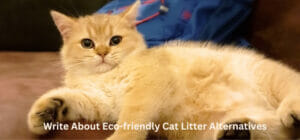
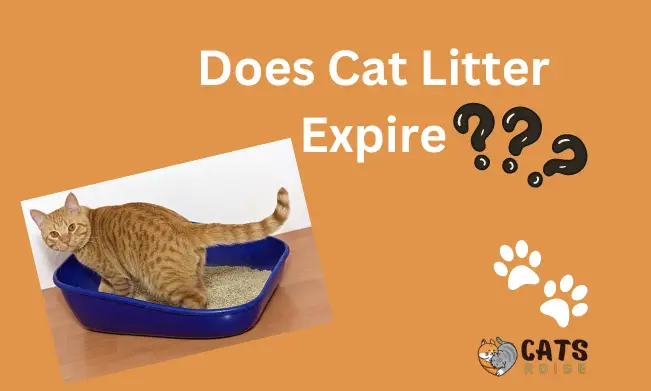
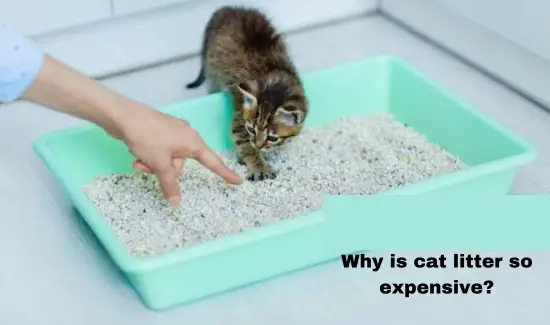
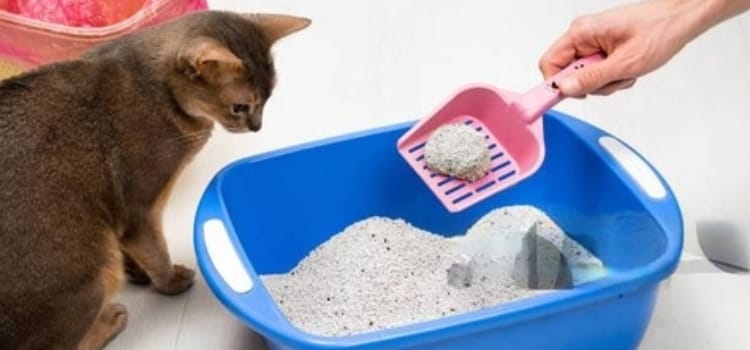
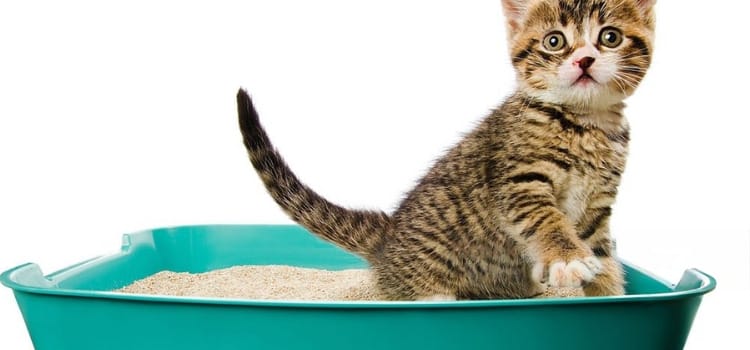
[…] sustainable materials in their products. These initiatives, particularly prevalent in the realm of Eco-friendly Cat Litter Alternatives, are advantageous for the environment. However, they entail an extra cost that ultimately gets […]